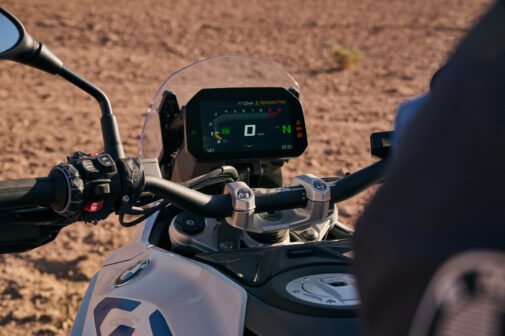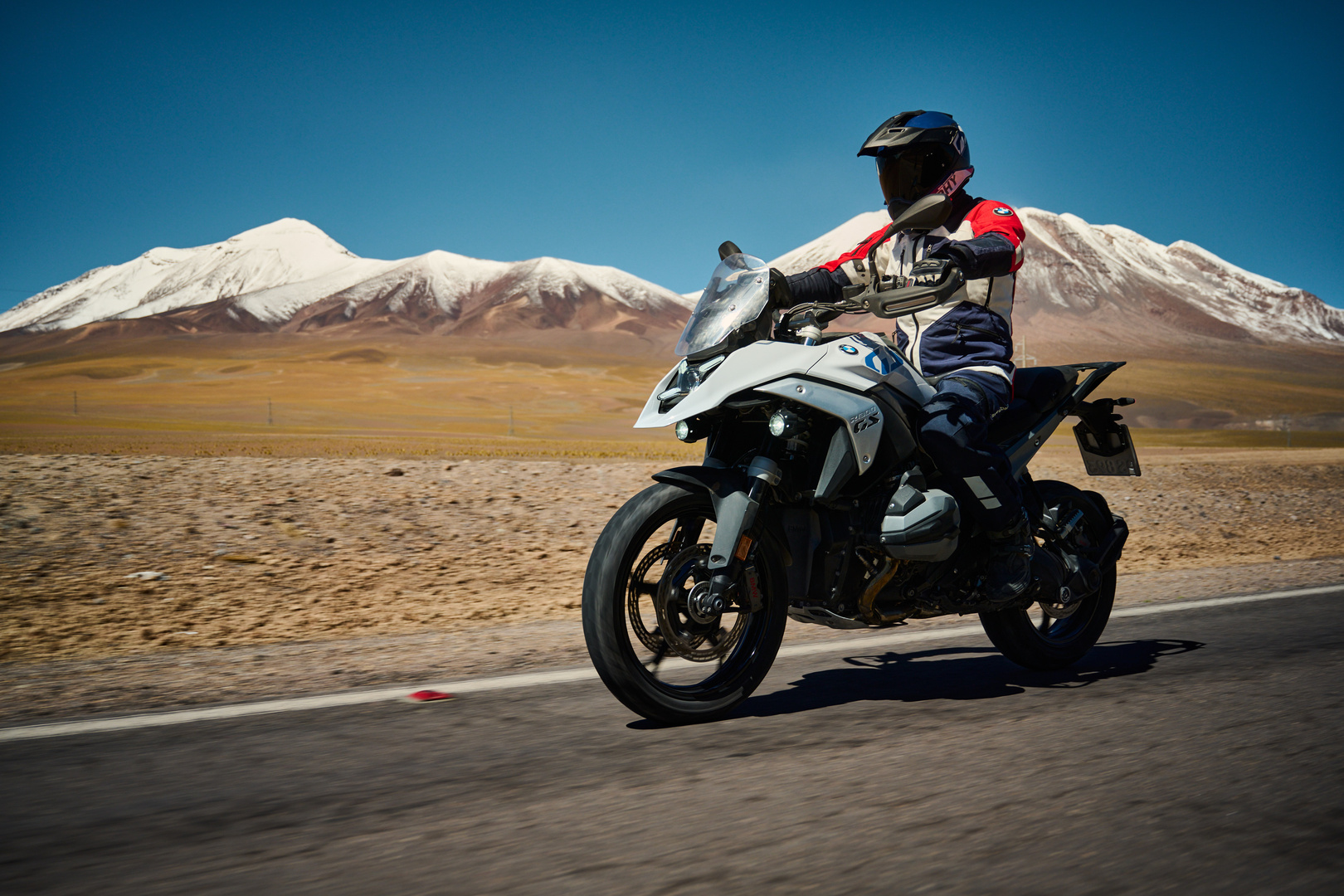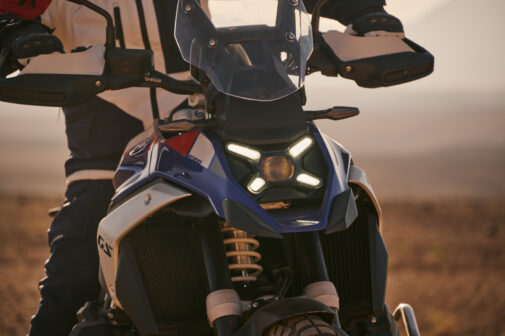What happens when an R 1250 GS decides to hit the gym? Weight loss, extra fat loss, and added muscle. Meet the BMW R 1300 GS — the ADV that replaces the R 1250 GS with a sleeker profile, 12 kg weight reduction, and more power. The BMW R 1300 GS has just made its global premiere, and we can expect it to arrive on Indian shores sometime in 2024. This isn’t the only ADV the folks in Bavaria came up with though — there are speculations of a R 1400 GS and an M 1300 GS in the works. But, let’s cut back to the present, shall we?
From pictures, it’s easy enough to tell that the R 1300 GS is definitely not as bulky as its predecessor was. The R 1300 GS gets a much slimmer front beak, with an x-shaped headlamp that replaces the signature GS headlamp. The fuel tank is made of aluminium and is also flatter than the one on the R 1250 GS. At the rear, the radar panel makes its presence well-known, but the profile is still sleek when compared to the 1250.
The BMW R 1300 GS is powered by an all-new 1300 cc twin-cylinder boxer engine, which puts out 143 bhp at 7750 rpm and 15.19 kgm of torque at 6500 rpm. This is now the most powerful boxer engine made by BMW Motorrad yet. The six-speed gearbox is new and located beneath the engine, which helped in making the boxer engine more compact.

The underpinnings are completely new as well, with a steel sheet-metal shell frame and a die-cast aluminium sub-frame replacing the tubular steel from before. This setup makes use of a new Evo Telelever and Evo Paralever suspension setups on the front and rear respectively. The front features a flex element, while the rear gets a stiffer setup. BMW Motorrad says this results in better stability and steering precision — something we’d like to see for ourselves on a review unit possibly next year. In terms of wheel sizes, the R 1300 makes use of a 19-inch front and a 17-inch rear wheel setup. The R 1300 GS also receives optional dynamic electronic suspension adjustment, adaptive vehicle ride height control, and a sports suspension. In terms of braking hardware, it gets 310 mm semi-floating twin-discs with four-piston radial callipers at the front, while at the rear, it receives a 285 mm disc with dual-piston callipers.

Finally, in terms of features, the BMW R 1300 GS receives radar-based rider assistance aids, such as active cruise control, lane change and front collision warning. Then there are other features, such as an optional cornering headlamp function, four riding modes, a 6.5-inch TFT display, heated grips, SOS calling, and a keyless system among many others.

The BMW R 1300 GS can be expected to carry a 2024 launch date for the Indian market, competing against the Triumph Tiger 1200, Ducati Multistrada V4, and the Harley-Davidson Pan America.
Time to make space for an ADV in your garage then, ain’t it?


















